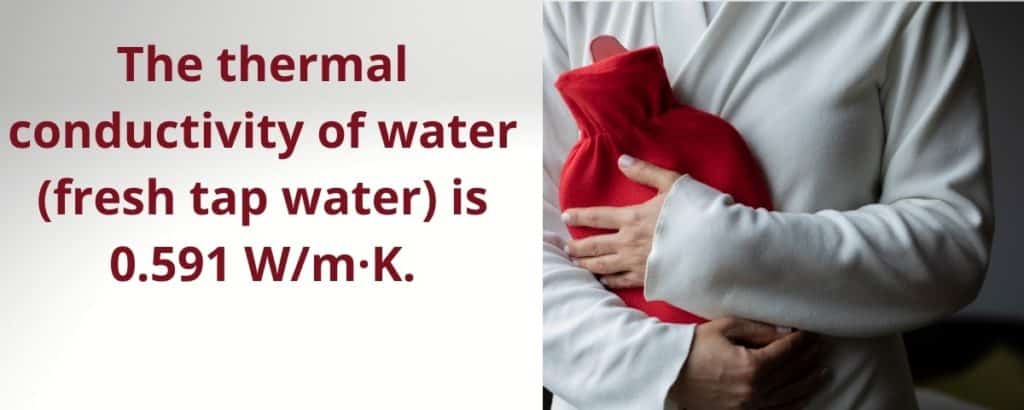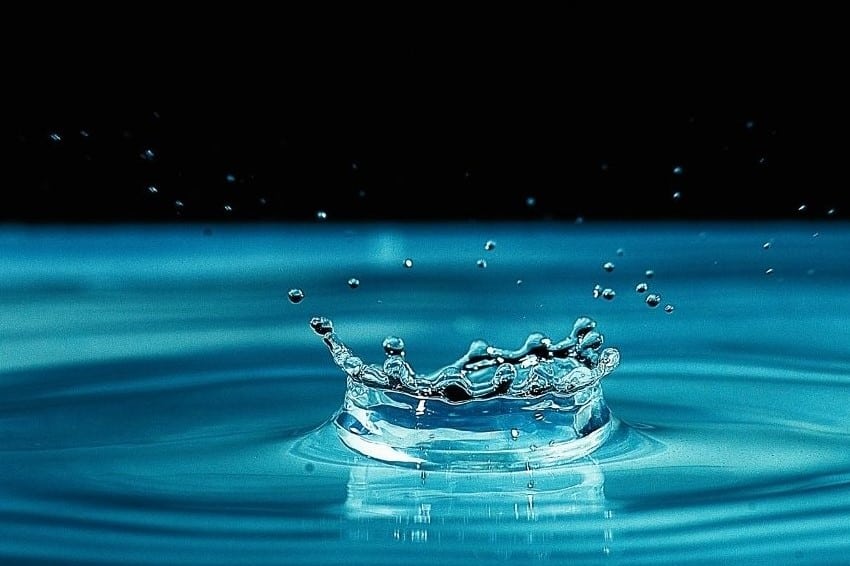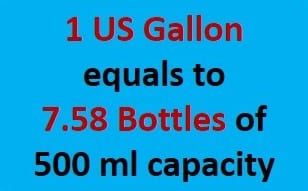Thermal conductivity is a measure of a material’s ability to transfer heat. The thermal conductivity of water (fresh tap water) is 0.606 W/m·K. It is commonly represented by the symbol “k” or, less frequently, by the symbol “lambda.” The reciprocal of thermal conductivity is referred to as thermal resistivity.

Thermal conduction is the transfer of heat from one object to another when they are in contact. For instance, we get heat from a hot water bottle by thermal conduction. Thermal conductivity refers to the amount of heat energy transferred per unit time and the surface area divided by the temperature difference. The formula for thermal conductivity (K) is given as
K = (QL)/(AΔT)
- K is the thermal conductivity and its unit is watts per meter-kelvin.
- Q is the amount of heat transferred through the material in joules per second or Watts.
- The distance between the two isothermal planes is denoted by L.
- A denotes the surface area in square meters.
- ΔT is the difference in temperature in Kelvin.
A material’s thermal conductivity is highly dependent on a number of different factors. These include the temperature gradient, material properties, and the length of the heat path.
The lower a material’s thermal conductivity, the slower temperature differences transmit through it, and thus the more effective it is as an insulator. In general, the lower the thermal conductivity of a building’s fabric, the less energy is required to keep the interior comfortable.
| Thermal Conductivity of Water | Unit Conversion |
|---|---|
| 0.606 W/(m*K) | Standard SI unit |
| 0.140 BTU/(hrft°F) | British thermal units per hour, feet, and Fahrenheit |
| 0.116 kcal/(hrm°C) | Kilocalories per hour, meters, and Celsius |
Table of Contents
Thermal Conductivity of Water-Important Points
- The thermal conductivity of water varies depending on the temperature of the water.
- At room temperature (around 25 degrees Celsius), the thermal conductivity of pure water is around 0.606 W/(m*K).
- Water has a relatively low thermal conductivity compared to many other materials.
- The thermal conductivity of water increases as the temperature increases.
- The thermal conductivity of water can be influenced by factors such as the presence of impurities, dissolved substances, or the pH level of the water.
Solved Example
Suppose we have a sample of water with a thickness of 0.1 meters, a cross-sectional area of 0.01 square meters, and a temperature difference of 10 degrees Celsius. We want to determine the thermal conductivity of the water using the equation:
K = (Q * L) / (A * ΔT)
where Q is the heat transferred through the water. Let’s say we measure the amount of heat transferred through the water to be 10 joules (J). Then we can plug in the values we know and solve for K:
K = (10 J * 0.1 m) / (0.01 m^2 * 10 K)
K = 1 W/K
So in this example, we find that the thermal conductivity of the water is 1 W/K, which is higher than the commonly cited value of 0.606 W/(m·K) at 25 degrees Celsius. This difference in value may be due to factors such as the purity of the water or the exact temperature of the sample.
Key Points
| Thermal conductivity of water | 0.606 W/m·K. |
| The boiling point of water | 100 °C or 212 °F |
| The melting point of water (ice) | 0 degrees Celsius (32 degrees F) |
| The specific gravity of water | 1 at 4 degrees Celsius |
| The density of water g/ml | 0.9998395 at 4.0°C (39.2°F) |
| The density of water lbs/U.S gal | 8.345 lbs/U.S. gal |
| Specific heat of water | 4182 J/kg°C |
Thermal Conductivity Units
- watt/meter/K [W/(m*K)]
- 1 watt/centimeter/°C = 100 watt/meter/K [W/(m*K)]
- 1 kilowatt/meter/K [kW/(m*K)] = 1000 watts/meter/K [W/(m*K)]
- 1 calorie (IT)/second/cm/°C = 418.6800000009 watt/meter/K [W/(m*K)]
Summary
- A material’s thermal conductivity is a measure of how quickly energy transfers through it when heated.
- A material with a high thermal conductivity quickly transfers energy.
- Low thermal conductivity materials transfer energy slowly and can be used as thermal insulators.
- High thermal conductivity materials are commonly used in heat sink applications, while low thermal conductivity materials are used as thermal insulation.
- At 20 °C, water has a thermal conductivity of 0.598 W/mK.
Related Links
is water a pure substance?
Soft Water vs. Hard Water
How Much is a Liter of Water?
How Much Does a Gallon of Water Weigh?
Multiple Choice Questions
- What is the standard SI unit for thermal conductivity?
a) J/m
b) W/m^2
c) W/m·K
d) K/m
Answer: c) W/m·K
- Does the thermal conductivity of water increase or decrease as the temperature increases?
a) increase
b) decrease
c) stay the same
Answer: a) increase
- Which of the following is a common unit for thermal conductivity in the English system of units?
a) J/(kg·K)
b) W/m^2
c) BTU/(hr·ft·°F)
d) m^2/s
Answer: c) BTU/(hr·ft·°F)
- How does the thermal conductivity of impure water compare to that of pure water?
a) impure water has a higher thermal conductivity
b) pure water has a higher thermal conductivity
c) impurities have no effect on the thermal conductivity of water
Answer: b) pure water has a higher thermal conductivity
- What is the relationship between the thickness of a sample of water and its thermal conductivity?
a) the thicker the sample, the higher the thermal conductivity
b) the thinner the sample, the higher the thermal conductivity
c) there is no relationship between the thickness of a sample of water and its thermal conductivity
Answer: c) there is no relationship between the thickness of a sample of water and its thermal conductivity.
Frequently Asked Questions
1. What temperature does water freeze at?
The normal freezing point of water is 0 degrees Celsius or 32 degrees Fahrenheit.
2. What is the thermal energy equation?
The change in thermal energy caused by temperature changes is calculated as follows:
change in thermal energy = mass x specific heat capacity x change in temperature
This equation is used when Thermal energy change is measured in joules (J)
3. How Many Water Bottles is a Gallon?
The simple answer is that a gallon is made up of approximately eight bottles of water. Check out the full article “how many water bottles is a gallon?”
4. What is the diffusion coefficient?
The diffusion coefficient is a key variable in many diffusion equations because it describes how quickly one material can diffuse through another. The equation relating the diffusion coefficient to temperature shows that as temperature rises, so does the diffusion coefficient.
5. How Many Cups Are in a Gallon?
A gallon is equivalent to 16 cups, whereas a US dry gallon is equivalent to 18.61 cups. One cup is half a pint in the United States (236.6 ml). Check “How many cups in gallon”.
6. What is fresh water?
Freshwater is defined as water with less than 1,000 milligrams per liter of dissolved solids, most commonly salt. Earth’s surface-water bodies are generally thought of as renewable resources as part of the water cycle, despite their reliance on other parts of the water cycle.
7. Viscosity of water?
Water fit for human consumption is defined as potable water (i.e., water that can be used for drinking or cooking). The term implies that the water is both safe and drinkable.
Non-potable water is water that is unfit for drinking but, depending on its quality, can be used for a variety of other purposes.
8. What is portable water?
Water has a viscosity of 0.01 P.s (Pascal seconds) at 20 degrees Celsius.
The resistance to fluid flow and the movement of an object through a fluid is usually expressed in terms of viscosity. The Poiseuille unit of measure for viscosity is Pascal seconds (Pa s). “Poise” is the more commonly used dyne sec/cm2.
More Interesting Topics
The Density of Water lbs/U.S gal
The density of Water in g/ml-Accurate Value
Why Does Oil Float on Water?
Absolute Temperature Definition| Kelvin Scale
- BCl3 Lewis Structure in four simple steps - November 1, 2023
- PH3 Lewis Structure in four simple steps - October 8, 2023
- PF3 Lewis structure in four simple steps - September 24, 2023



